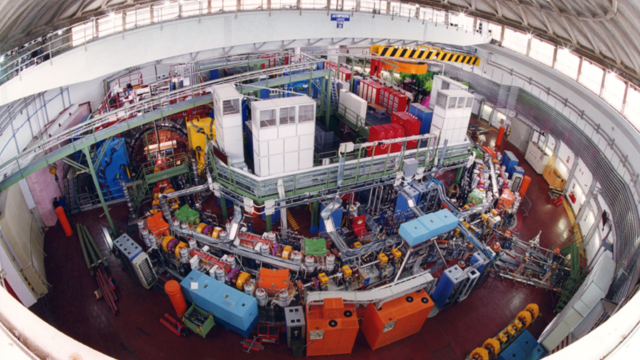This month, Italian physicists will turn on an experiment hunting for a fifth, dark force of nature, The Guardian reports.
You may be familiar with the hunt for dark matter. Measurements of the universe imply that there should be five to six times more mass than experiments can observe directly. Many scientists hope to find this missing mass.
A new experiment seeks evidence for whether dark mass interacts with regular matter through some dark particle messenger.
“If we find this force it will completely change the paradigm we have now. It would open up a new world and help us to understand the particles and forces that compose the dark sector,” researcher Mauro Raggi from Sapienza University of Rome told The Guardian.
Most (but not all) physicists believe that dark matter is a particle whose effects can only be observed through the force of gravity. No experiment has directly detected dark matter on Earth, but perhaps there is some portal to these dark sector particles that communicates with regular matter, too.
It would be a dark boson, the word physicists use to describe force-delivering particles like photons. This is different from other dark matter-hunting experiments, which are looking for a totally new kind of particle, rather than a boson.
The PADME experiment on the DAFNE Beam-Test Facility in Italy seeks to find these dark bosons. PADME receives DAFNE’s beam of the antimatter partners of electrons, called positrons. The beam of positrons strikes a piece of target material, a thin diamond film. The positrons combine with electrons inside the target material and annihilate in a flash of light and energy that the experiment can detect.
If an unexplained amount of mass goes missing after the annihilation, it could be a signature of the dark boson.
PADME is just one of several experiments looking for dark bosons. The LHC, scientists from Jefferson Lab in Virginia, and others are hunting for hints, though none have materialised.
“Given that we have found little which convinces us for a definite extension of the Standard Model, searches in several directions are necessary. These experiments are a required step in this context,” Suchita Kulkarni, a theoretical physicist from the Institute of High Energy Physics in Austria who was not involved with the study, told Gizmodo via email.
But what sets PADME apart is the masses of potential particles it might find. “This is a new chance for the lab to discover low-mass particles,” Caterina Doglioni told Gizmodo.
She explained that this is a very challenging range to reach for experiments. Hunting for that lower mass is important, as it might allow physicists to validate the 2016 measurement from a Hungarian team that seemed to indicate the presence of a fifth fundamental force, in addition to gravity, electromagnetism, the strong force (which holds together atomic nuclei), and the weak force (responsible for radioactive decay).
Some have doubts that the PADME experiment will find anything, as Physics World reported back in June. But even if it doesn’t, scientists might move it to a higher-energy particle accelerator at Cornell University in the early 2020s to continue its search.
Solving the mystery of dark matter won’t be easy, but the determined hunt for new particles continues at increasingly sensitive experiments around the world.
[via the Guardian]
